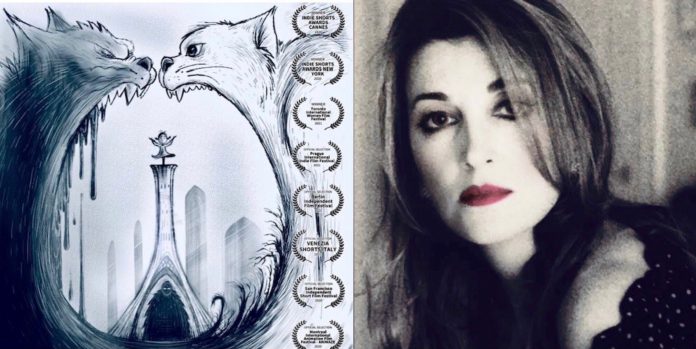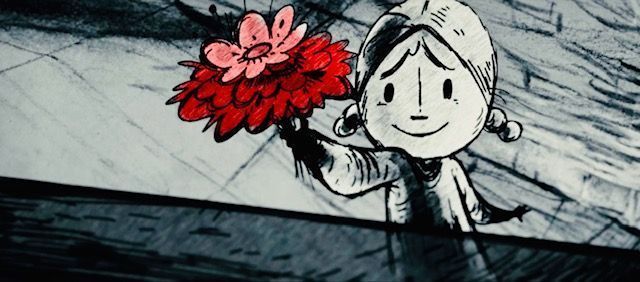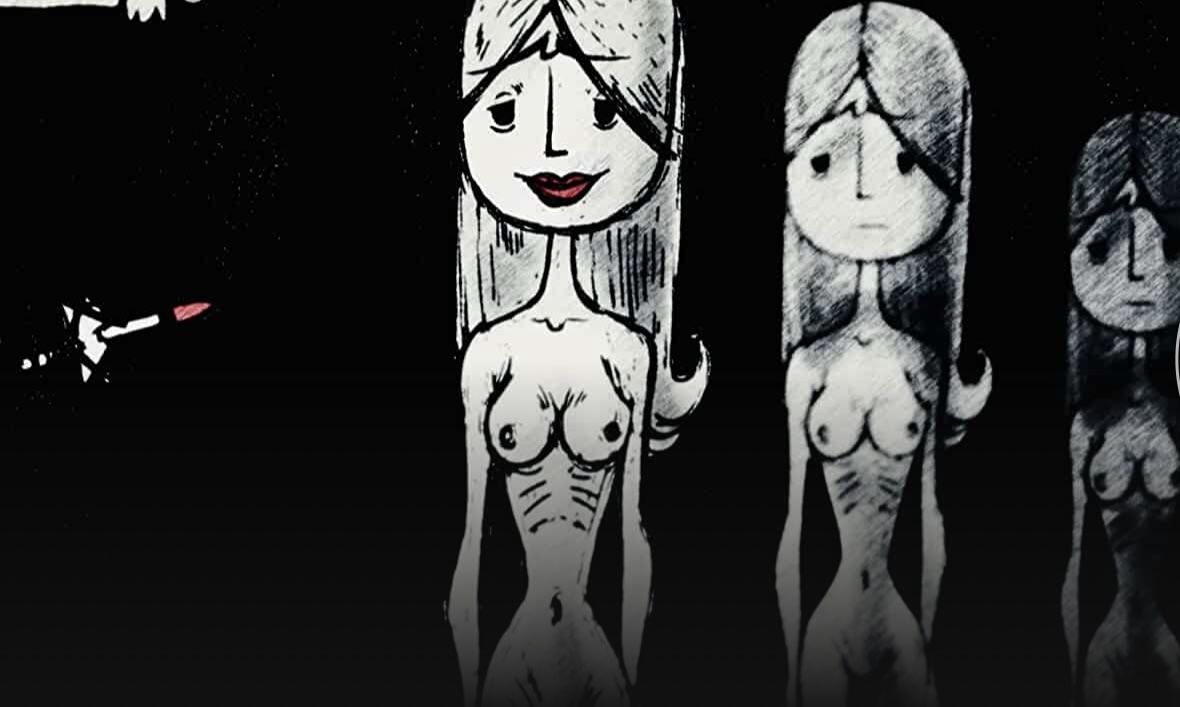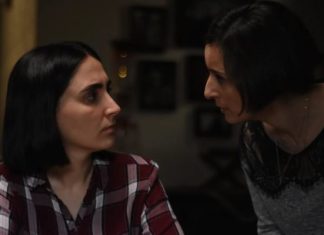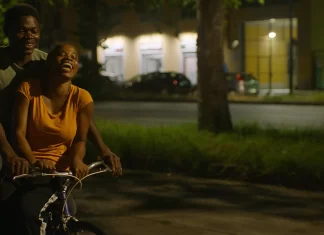By Ahmad Rafat
Iranian-American stage and television actress Mary Apick has produced a 13-minute animation film titled “The Cat” drawing attention to the plight of Iran’s child peddlers. The focus of the story: a flower girl.
“The Cat” was written and directed in 2020 by Ms. Apick, who also stars in it. It has been screened at some 30 international film festivals in the past year, including the Moscow International Film Festival (where it won the prize for best animation), the Toronto International Women Film Festival, the Cannes Indie Shorts Award and the New York Indie Short Award.
Mary Apick (1954-) was one of the most prominent actresses in Iran before the 1979 Islamic Revolution. She won the Best Actress award at the 10th Moscow International Film Festival for her role in the 1977 film “Dead End,” directed by Parviz Sayyad (1939-). She began her acting career in Massoud Kimiai’s 1971 movie “Dash Akol.”
[aesop_image img=”https://kayhanlife.com/wp-content/uploads/2021/08/Moscow-Award-1977.jpg” panorama=”off” credit=”Mary Apick. Moscow Award 1977.” align=”center” lightbox=”on” captionsrc=”custom” captionposition=”left” revealfx=”off” overlay_revealfx=”off”]
Like so many artists, Apick left Iran after the 1979 Islamic Revolution and settled in Los Angeles. She has directed several other films (besides “The Cat”).
Kayhan Life recently spoke to Mary Apick about her life and career.
Ms. Apick, you have had a long career on stage and in film. What made you decide to make an animation film?
I had been thinking about making an animation film for a long time, but never went through with the idea, because I did not have experience in the field. I’ve primarily been a stage and film actress and director.
I believe animation offers broader scope and more potential for telling a story. Animation films enable one to express and portray events more effectively, without using actors and traditional cinematography. I am thrilled to have completed this project.
I wanted to tell the story of what happened in Iran in the past 40 years through the eyes of an Iranian child peddling goods — in particular, a little girl selling flowers in the streets of Tehran. Most of my work in the past four decades has revolved around the condition of girls and women. Trying to represent 40 years of Iranian history in a 13-minute animation film proved an exciting undertaking.
The title is “The Cat,” mainly because the map of Iran resembles a cat. It’s a black-and- white film — black being the predominant color. Does black symbolize the dark and miserable life of children in Iran?
I used mainly black and white and a little red in this work. Black and white and two-dimensional technology provide a perfect setting for depicting social issues. I aimed to show what has happened since the 1979 Islamic Revolution in Iran in 13 minutes.
I wanted to highlight all of the country’s problems in this animation film, including the plight of working children, prostitution, the sale of national assets, the squandering of oil revenue, the problems in [the southwestern province of] Khuzestan, and water shortage. Water is a significant issue that can spark conflicts in the future. Black-and-white animation was the best medium with which to explore these questions.
A little girl fleeing darkness is a reference to the resilience of Iranian girls and women who have been experiencing discrimination and oppression for so many years.
“The Cat” won the best animation award at the Moscow International Film Festival. In 1977, you won the best actress award at the 10th Moscow International Film Festival for your role in “Dead End.”
I did indeed, for “Dead End,” directed by Parviz Sayyad. It was the first time that an Iranian actress had received such a high honor at an international film festival. It was an essential step towards establishing the reputation of Iranian cinema globally. We showed that actresses played a significant role in Iranian cinema. Women did not get the critical parts in movies in those days, but it was a start.
When asked how I felt after “The Cat” received the award for animation, I had to remind them that I had won the award for best actress at the same festival in 1977.
The 1977 award could have opened many doors to Iranian cinema. I have never stopped working in the past 40 years. Yet every day, I lament what we have lost during that time.
[aesop_image img=”https://kayhanlife.com/wp-content/uploads/2021/08/Film-Poster.jpg” panorama=”off” credit=”Film Poster./” align=”center” lightbox=”on” captionsrc=”custom” captionposition=”left” revealfx=”off” overlay_revealfx=”off”]
You have highlighted problems facing Iranian artists who have emigrated to other countries. Is lack of understanding of a new culture the most critical issue?
My colleague Parviz Sayyad and I focused on the Iranian community and on social issues in the early years, trying to keep the Persian language alive through theater and film. For instance, we staged the [1983] play Khar [(“Donkey”)] in various U.S. cities. We also made Ferestadeh [(“The Mission”) in 1983] and Sarhad [(“Checkpoint”) in 1987] with incredible difficulty.
Not having financial backers was the major problem. Studios dominate the movie industry in America. It is a tightly controlled commercial system that art films cannot easily access. Distributors prefer to work with studios because they can sell more movies. Iranian investors were willing to help, but it was more profitable for them to put their money in real estate.
Although language and culture posed some problems, we did not remain inactive. I wrote and directed the play “Beneath the Veil,” for which I won the Los Angeles Theater Festival’s Critics Choice Award. The play, about the condition of women in Iran, was staged [in 2005 at the John F. Kennedy Center for Performing Arts in Washington DC and the Lincoln Center for the Performing Arts in New York City.
I also produced several plays and films for children, using the traditional rhyming technique, so they would stay in touch with their culture and native language. They included Pari in Jangal (“A Fairy’s Tale in the Forest,” 1993) and Gohar Shab Cheragh (“Jewel of the Night,” 1998). The Iranian-American composer Shardad Rohani wrote the music for these stories.
Most of my artistic work has focused on the plight of prisoners. I have sought to be a voice in Iranian and American societies.

